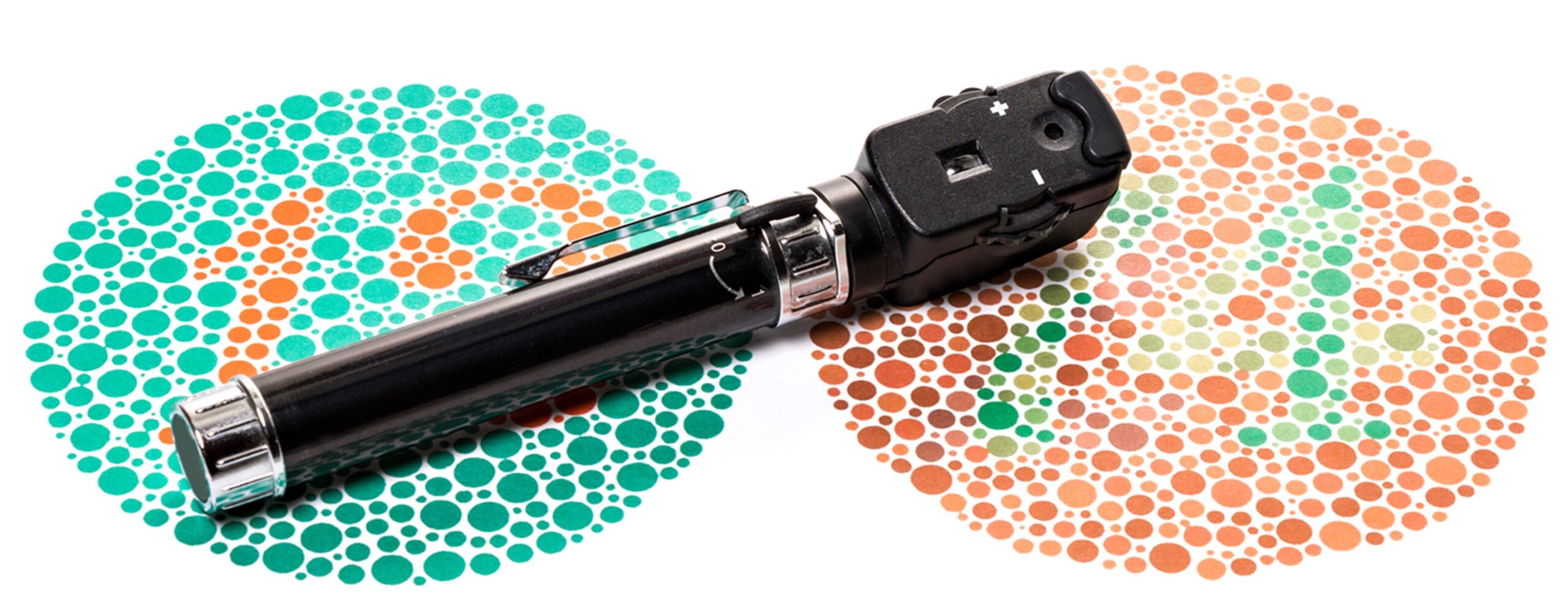Color vision testing equipment is instrumental in diagnosing and understanding color vision deficiencies, aiding optometrists and ophthalmologists in accurately assessing patients’ color perception. In this detailed exploration, we will delve into various types of color vision testing equipment, their functionalities, and their significance in diagnosing and managing color vision deficiencies.
Types of Color Vision Testing Equipment:

- Ishihara Plates:
– Ishihara plates, comprising circular plates with colored dots arranged in patterns, are widely used for color vision testing.
– Patients are asked to identify hidden numbers or shapes within the dots. These patterns and colors target specific types of color vision deficiencies, particularly red-green deficiencies.
- Farnsworth D-15 Test:
– The Farnsworth D-15 Test involves arranging 15 colored caps or chips in order of colours.
– Individuals with color vision deficiencies may face challenges in correctly arranging the caps, indicating the extent and type of deficiency.
- Anomaloscope:
– An anomaloscope, an advanced device, measures color matching and discrimination.
– It consists of two halves, with one emitting a fixed color while the other allows adjustment of hue and intensity. Patients match the colors to determine color vision deficiencies accurately.
- HRR Test (Hardy Rand Rittler Test):
– The HRR test uses plates with colored dots arranged in specific patterns to evaluate color vision deficiencies.
– Patients identify shapes or numbers within the dots, aiding in the detection of various color vision deficiencies.
- Basic Color Test:
– This test assesses an individual’s ability to distinguish between different colors using standardized color charts or cards.
– Patients may match colors or identify colors in different lighting conditions to evaluate color perception accurately.
- Endridge Green Lantern Test:
– The Endridge Green Lantern Test screens for color vision deficiencies, particularly in professions with color vision requirements.
– It involves identifying colored lights displayed on a lantern to assess color vision capabilities.
- Double Light Lantern Test (Optec 900):
– This test evaluates color vision by presenting pairs of lights with different colors and intensities.
– Patients must identify the colors and intensity of each light, assessing color discrimination abilities.
- CAD Test (Cambridge Colour Test):
– The CAD Test, a computer-based assessment, measures color discrimination across the visual spectrum.
– Users identify subtle differences in hue, saturation, and brightness of various color stimuli.
Significance of Color Vision Testing Equipment:
– Early Detection: Color vision testing equipment enables early detection of color vision deficiencies, facilitating timely intervention.
– Occupational Requirements: Certain professions require normal color vision. Testing equipment ensures candidates meet these requirements.
– Personalized Treatment: Accurate diagnosis allows for tailored treatment plans, addressing specific patient needs.
Color vision testing equipment is indispensable for diagnosing and managing color vision deficiencies. From traditional Ishihara plates to advanced anomaloscopes, these tools provide valuable insights into patients’ color perception capabilities. Understanding their types and significance enables optometrists and ophthalmologists to assess and address color vision deficiencies effectively, enhancing patients’ quality of life and visual experiences.
